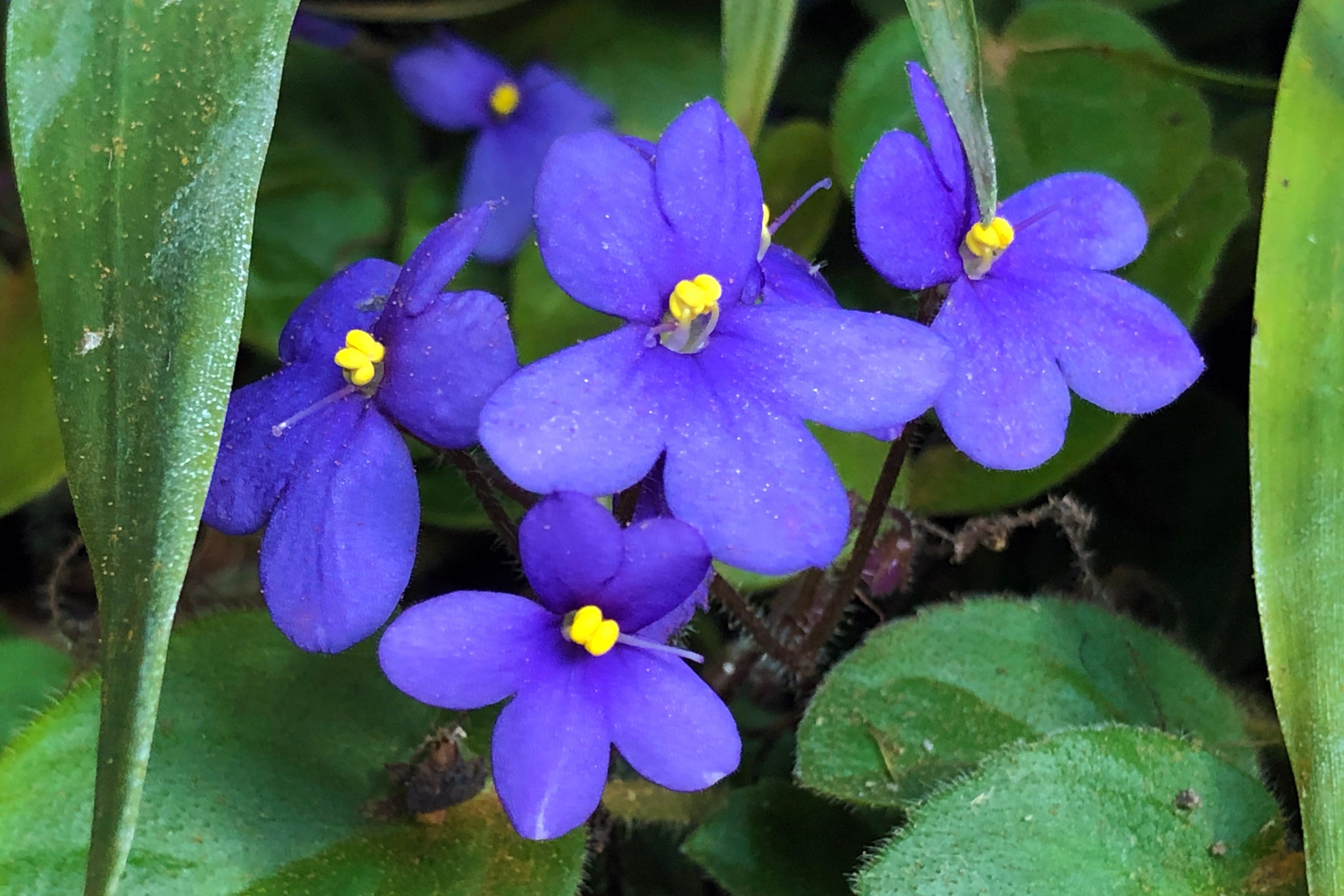African violets
(Saintpaulia ionantha)

Description
Saintpaulia ionantha is a popular houseplant commonly known as African violet. The plant belongs to the Gesneriaceae family and is native to Tanzania, East Africa. The plant's common name is derived from the Saint Paul Mountains in Tanzania where it was first discovered. The plant has gained popularity among plant enthusiasts due to its beautiful flowers and ease of care. Description Saintpaulia ionantha is a small, perennial herb that grows up to 6 inches in height and 6-8 inches in width. The plant has soft, fuzzy leaves that are oval-shaped, dark green in color, and grow in a rosette pattern. The leaves have a slightly serrated edge and are velvety to the touch. The plant produces clusters of flowers that are typically 1-2 inches in diameter and come in a variety of colors, including white, pink, blue, and purple. The flowers have a distinct five-petaled shape and are held on long, slender stems. Cultivation Here are some tips for cultivating and caring for these plants: Light: African violets prefer bright, indirect light. Avoid direct sunlight, which can burn the leaves. Watering: Water the plant from the bottom by placing it in a saucer filled with water. Do not water from the top, as water on the leaves can cause damage. Allow the soil to dry slightly between waterings. Soil: Use a well-draining, porous soil that is specifically formulated for African violets. Temperature: African violets prefer a consistent temperature between 60-80°F (15-27°C). Avoid placing them near cold drafts or hot, dry air vents. Humidity: These plants like a humid environment. You can increase humidity by placing a tray of water near the plant or by using a humidifier. Fertilizer: Use a balanced fertilizer specifically formulated for African violets. Follow the package instructions for dosage and frequency. Pruning: Remove any dead or yellowing leaves, as well as spent flowers, to encourage new growth. By following these tips, you can ensure that your African violet thrives and produces beautiful flowers for years to come. Propagation Saintpaulia ionantha can be propagated through two methods: leaf cuttings or division. For leaf cuttings, select a healthy leaf and remove it from the plant by cutting it at the base of the stem. Place the leaf in a well-draining potting mix, covering the stem with soil. Keep the soil moist and the cutting in bright, indirect light. After a few weeks, the cutting should develop roots and a new plant will start to grow. To propagate through division, remove the plant from its pot and gently separate the root ball into two or more sections. Each section should have its own set of leaves and roots. Plant each section in a new pot with fresh potting soil, water it well, and keep it in bright, indirect light. The new plants should begin to grow within a few weeks. Pests and Diseases Saintpaulia ionantha is susceptible to a few pests and diseases, including spider mites, mealybugs, and crown rot. Spider mites and mealybugs can be treated with insecticidal soap or neem oil. Crown rot is caused by overwatering and can be prevented by allowing the soil to dry out between watering. Conclusion Saintpaulia ionantha, or African violet, is a popular houseplant known for its beautiful flowers and ease of care. With the proper cultivation techniques, this plant can thrive in any home environment. Whether propagated through leaf cuttings or division, the plant will continue to produce clusters of colorful flowers for years to come. With a little attention and care, the African violet can bring beauty and joy to any space.
Taxonomic tree:







